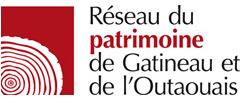Greetings,
To begin this sustainable and diplomatic socio-urban dialogue,
Let us establish together the principles of pathways to arrive at a democratic consensus.
- Think before reacting
The tendency in a conflict situation is to react immediately. After all, if we do not react, we risk losing our chance. In order to resolve conflicts successfully, it is important to think before reacting – consider the options, weigh the possibilities. The same reaction is not appropriate for all conflicts.
- Actively listen
Listening is the most important part of communication. If we do not hear what the other parties are communicating, we will not be able to resolve a conflict. Active listening does not just mean listening to what another person is saying with words, but also what is being said with intonation and body language. The active listening process also involves informing the speaker that he has been heard. For example, “What I heard you say is ……”
- Ensure a fair process
The process of resolving a conflict is often as critical as the conflict itself. It is important to ensure that the chosen resolution method and the process for its assignment are fair to all parties to the conflict. Even the perception of injustice can destroy the resolution.
- Attack the problem
The conflict is very emotional. When emotions are strong, it is much easier to start attacking the person on the other side than to solve the problem. Conflicts are solved only when we attack the problem and not against each other. What is the problem behind emotion? What are the causes instead of the symptoms?
- Accept responsibility
Every conflict at his side and there is enough responsibility for everyone. Trying to blame only creates resentment and anger, which increases any existing conflict. To resolve a conflict, we must accept our share of responsibility and eliminate the concept of blame.
- Use direct communication
Say what we hear and think what we say. Avoid hiding the ball by discussing a problem. The best way to accompany this is to use “I-Messages”. With an “I-Message”, we express our own desires, needs or concerns to the listener. “I-Messages” are a clear and non-threatening way to tell others what we want and how we feel. A “you-message” blames or criticizes the listener. This suggests that he or she is at fault.
- Look for interests
Positions are generally easy to understand because we are taught to verbalize what we want. However, if we want to resolve a conflict successfully, we need to find out why we want something and what is really important about the conflicting issue. Remember to seek the true interests of all parties to the conflict.
- Focus on the future
In order to understand the conflict, it is important to understand the dynamics of the relationship, including the history of the relationship. However, to resolve the conflict, we must focus on the future. What do we want to do differently tomorrow?
- Options for mutual gain
Look for ways to make sure we are all better tomorrow than we are today. Our gain at someone else’s expense only prolongs the conflict and prevents its resolution.
__________________________________________________________________________________
Now, let’s quote and discuss an example of this dropdown in front of us.
The critical journey of the Ottawa Laurier Castle concept.
According to sources from Heritage Ottawa and the Ottawa CITIZEN.
October 16 last.
The Chateau Laurier owner is appealing an adjustment decision committee rejecting part of the company’s project to build an addition on the north side of the heritage hotel.
Heritage Ottawa is also appealing the decision, ensuring that the advocacy group is a party to the hearing.
Last month, a five-member compensation committee of the committee issued a ruling denying a request from the hotel to reduce protection margins in the northwestern part of the property.
According to the current design, the addition proposed by the hotel would project to Major’s Hill Park along 16.5 meters from the facade of the expansion. The Committee of Adjustment decided that the area of the addition would represent an increase in density on the site and was therefore not “minor”.
However, the committee left a difference with respect to a retaining wall in the withdrawal area at the edge of Major’s Hill Park. The mandatory setback for a building on the property of the hotel is three meters.
Michael Polowin, one of Heritage Ottawa’s lawyers, confirmed that the group is also filing an appeal with LPAT.
The group believes that Larco’s request for a minor derogation was not properly submitted to the Relief Committee, but the procedure is important because Heritage Ottawa could be the full party in an appeal rather than asking to be part of the appeal. Larco’s appeal, Polowin said.
Heritage Ottawa was the main group opposed to the proposed addition, particularly to the design of the controversial expansion.
Mr. Polowin, a municipal law expert with years of experience in call planning, estimated that an LPAT hearing could last for about a week, but that may not happen before April.
I invite for all for December to a moderated discussion about UNESCO’s design and project neighborhood.
Architecturally,
Prof. Luc L. Paquette 教授
- Member of the APA Board of Directors
- Member of the Architecture Committee



Leave a comment